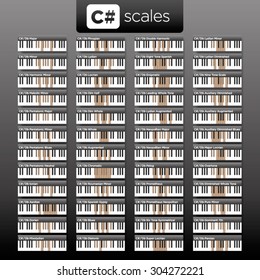

This time, you start on the 9th fret of the E6 string, then you conclude the first octave on the 6th fret of the G3 string. Here’s another pattern that’s a little more challenging. You start by positioning your finger on the 4h fret of the A5 string and playing the first C#/Db sound, and then work your way up until you reach the 2nd fret of the B2 string giving you a C#/Db sound that’s one octave higher. Now, let’s see how to play the first pattern of the C#/Db scale. So a sharp raises a pitch of a note one half step while a flat lowers a pitch of a note one half step. They give a change on the tone or pitch of a sound usually by a semitone (that means half note or half step). Sharps and flats are also called “accidental” notes in musical notation. In this case the starting note is C# or Db (which is the same).īut before anything else, let’s take a short review on what is a sharp note and a flat note. Just like playing the C major scale or even other major scales beginning with different keys, the C#/Db major scale has seven distinct notes to be played.

Now it’s time to get started with some basic sharp and flat guitar scales.įirst up is the C#/Db major guitar scale. To this day we’ve covered basic major scales, harmonic minor scales, even blues scales. There have been a couple of similar series on this blog already.


 0 kommentar(er)
0 kommentar(er)
